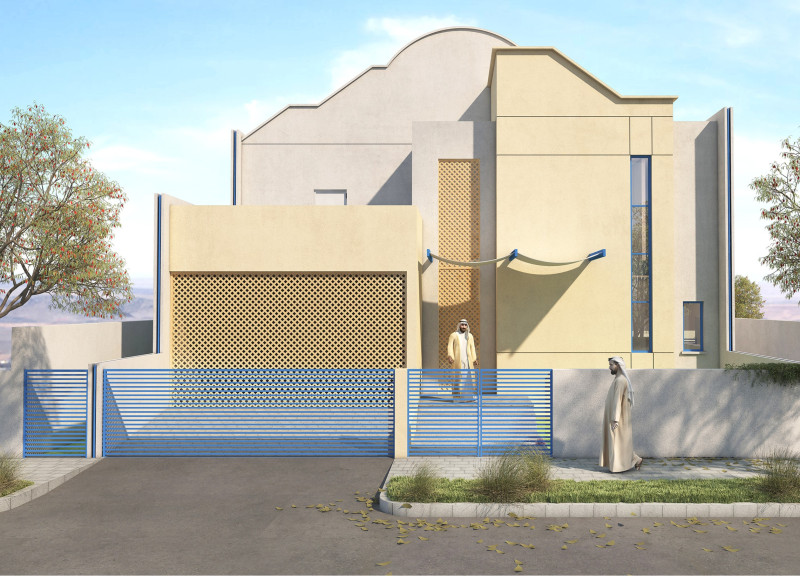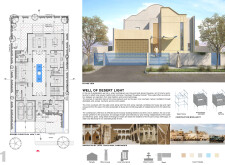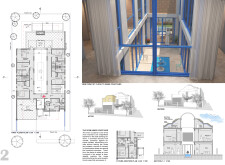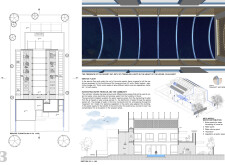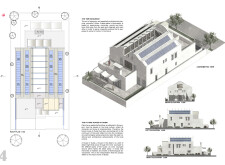5 key facts about this project
## Overview
Located in Dubai, UAE, the residential design titled "Well of Desert Light" aims to balance local traditions with modern sustainability practices in a desert context. Emphasizing the integration of natural light, efficient air circulation, and innovative water management, the project is conceptualized to create open and livable spaces. The design draws upon traditional Arabian architecture while incorporating advanced technologies to address environmental challenges.
### Spatial Strategy
The spatial organization within the structure is formulated to encourage smooth transitions between areas. The ground floor features a central inner courtyard, serving as a significant element of Arab residential design that enhances light penetration and provides a sheltered outdoor gathering space. The arrangement of the first floor ensures each bedroom has an unobstructed view of the courtyard, fostering a strong connection between interior and exterior environments. A dedicated service floor is structured to house solar energy systems and water management technologies, reflecting a practical approach to resource efficiency.
### Materiality and Sustainability
The material palette is carefully chosen to support both the functional and aesthetic objectives of the project. Structural elements include a steel frame, prestressed concrete, and infill framing, ensuring durability while minimizing environmental impact. Surface finishes involve natural stone flooring, textured concrete walls, and metal screens, which are designed to harmonize with the local landscape. Sustainable technologies are embedded throughout, featuring solar panels and water harvesting systems to enhance self-sufficiency. The incorporation of wind scoops facilitates passive cooling, reducing reliance on mechanical systems and addressing the local climate's challenges.
The design not only respects cultural narratives through its architectural language but also employs environmentally responsible methodologies that may serve as a prototype for future developments in arid regions.


